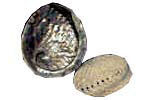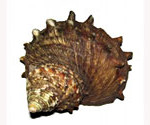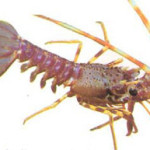
Apostichopus japonicus and Stichopus nigirpunctatus
Sea cucumbers (Holothuroidea) are a group of worm-like and usually soft-bodied echinoderms that are found in nearly every marine environment, but are most diverse on tropical shallow-water coral reefs. They range from the intertidal zone, where they may be exposed briefly at low tide, to the floor of the deepest oceanic trenches (an unidentified specimen was taken from the Philippine trench in 1951 at 10,190 metres) generally preferring sandy and muddy habitats.
There are approximately 1400 extant species which come in many forms. Generally cucumber shaped, some adults of diminutive species may not exceed 1cm in length, while one large species (Synapta maculata) can reach lengths of 3 m! (One report of this species at 5m long on the Great Barrier Reef may well have been two sea cucumbers entwined – but may also be accurate!)
Several species can swim and there are even forms that live their entire lives as plankton, floating with the ocean currents, whilst other species live buried in the sand and only expose their tentacles above the sand to attract food. Most sea cucumbers feed on detritus (dead plant and animal material) in the sand. The sand is taken in through the mouth, the detritus digested and the clean sand is then expelled. Others, like the beach-ball sea cucumber, use feather-like arms to filter food from the surrounding seawater.
Sea cucumbers can be commercially important for a number of reasons: in Asia the body wall is considered a gourmet item, being processed and marketed as trepang or beche-de-mer; pharmaceutical research has discovered that some compounds extracted from sea cucumber have anti-microbial, anti-coagulant, anticancerous and ant-inflammatory properties; Pacific island fisherman use the respiratory inhibiting toxins produced by sea cucumbers as an aid to fishing.
Some sea cucumbers are hosts to pearlfish (Carpidae). These eel-shaped fish enjoy a commensal relationship (a form of symbiosis where only one organism benefits) by living inside the body of the sea cucumber. Sea cucumbers also have the ability to auto-eviscerate. They can expel their internal organs through a violent muscular contraction which breaks the body wall. This wards off prey, and the sea cucumber then regenerates the expelled organs. The class Holothuroidea contains six orders, one of which is Aspidochirotida. This order in turn contains three families, one of which is Stichopodidae, which contains the two species that we are interested in.
The cold-water species of Japanese sea cucumber (Apostichopus japonicus, sometimes just Stichopus japonicus) is found in the Western Pacific Ocean along the coast of China, Japan and Korea and the east coast of Russia. It grows to a length of 25cm. The vertical range is from tidal areas down to 20–30 m depth. In China, it is mainly distributed along the coast of Shandong, Liaoning and Hebai Provinces, as well as in some areas of Jiangsu. In Japan it is highly valued in a raw food form. There are three colour variations of this sea cucumber: green, red, and black. The green and red varieties inhabit sandy and mud bottoms and are of great commercial importance. The black variety can be found both in the open sea and on rocky shores.
The species Stichopus nigropunctatus has a soft and pliant body wall and inhabits shallow waters.








Social Profiles